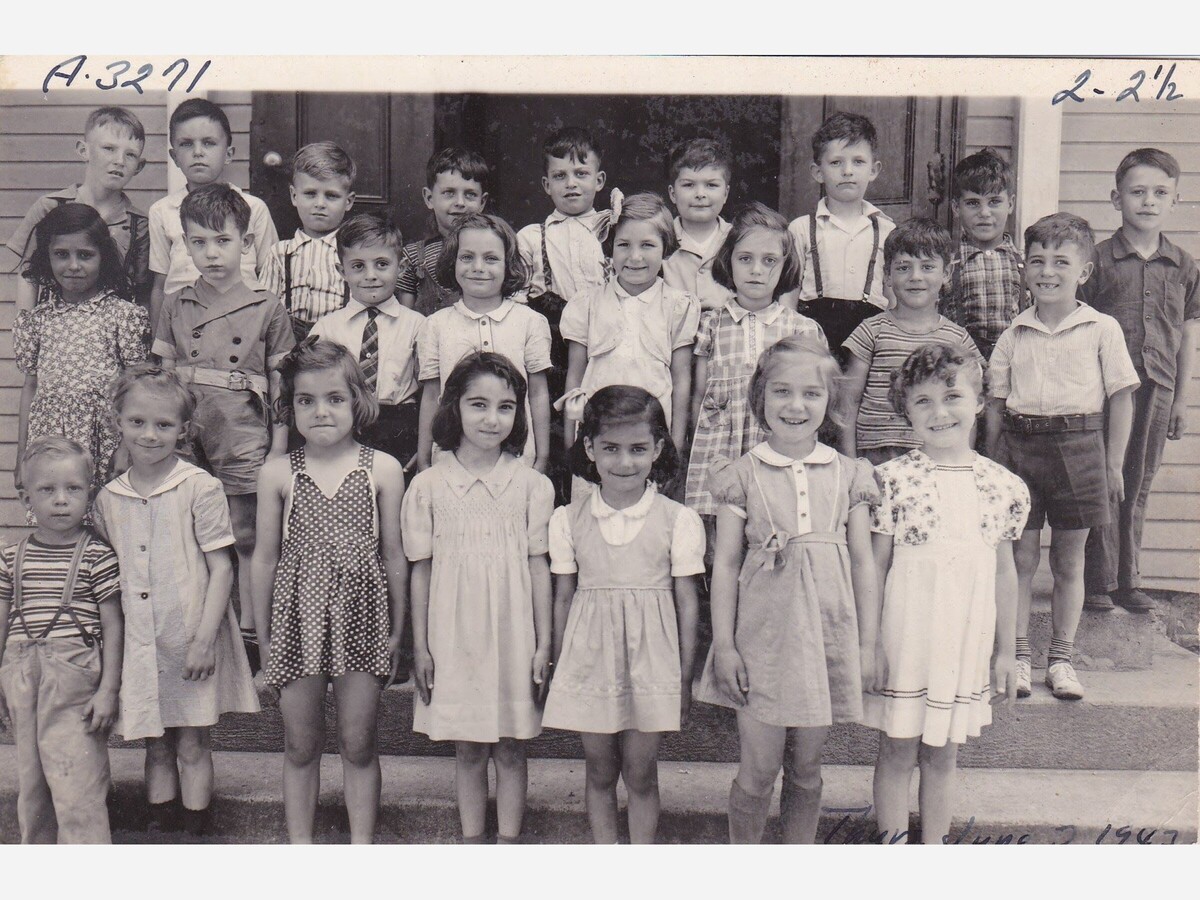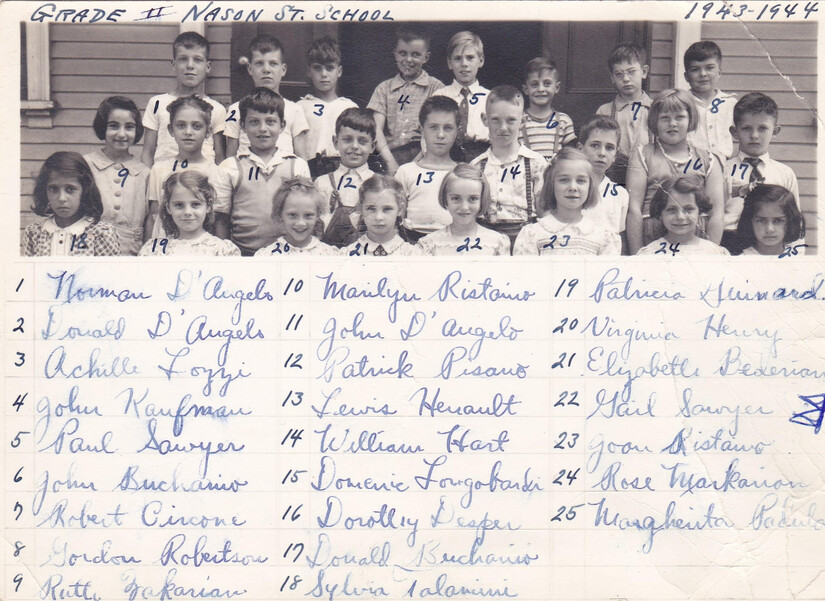Image

Above, a Nason Street School first grade class from 1942-43
The year 1878 was momentous for Franklin. A centennial year for the town, it also saw the publication of Mortimer Blake’s monumental history, Lydia Paine Ray became the first women from Franklin to earn a college degree when she graduated from Vassar, and between Union Streets and West Streets, the Nason Street School sprang into existence.
In a growing town in which education was becoming ever more important, Nason Street School was a proud location among the towns numerous neighborhood school houses, though in 1890 its new heating system – approved and certified by state inspectors, turned out to be inadequate to keep all parts of the building warm during a typical New England winter.
But such problems are not unknown in 21st century municipal buildings and the school and town evidently took that all in stride as the school went on to educate generations of youngsters. But in the 1930s, with the Depression raging, dampening both town finances and local birthrates, the somewhat deteriorated school was showing its age. Finally, in the Fall of 1940, the School Committee voted to close Nason Street at the end of the school year, in June of 1941.
But in the Spring of 1942, with Nason Street shuttered for almost a year, a serious fire tore through the Arlington Street School, forcing its closure. And when the School Committee convened, while they discussed the urgent need to build a new and more modern school –in the interim they decided to reopen the Nason Street School and use it to house students displaced from Arlington Street.
Nason Street, by then described in news reports as “condemned” – at least as far as the state’s school inspectors were concerned -- was far from an ideal educational environment. One long-time Franklin resident who attended other public schools in town in the 1940s, described Nason Street as “Dickensian.”
But children and educators made do. They had to. With World War II in full swing construction supplies and scarce workers were reserved for military-related projects – bases, factories, and the like – so Franklin made do.
Finally, in the late 1940s, with the war over and the economy on a relatively even keel the town began to again talk in earnest about building a new school. One issue compelling attention to Nason Street was that most of its students walked to school from the neighborhood along Union Street “across the tracks.” 131 children crossed those tracks in each direction, each day – some who chose to go home for lunch, perhaps even more often. And at that point in time there were at least three active tracks at the crossing.
What finally tipped the town toward action was the generosity of the Parmenter family, poultrymen famous for their Palmer Red variety of chickens.
Son Gerald Murdock Parmenter, a 1935 graduate of Franklin High who later earned an associate’s degree from Hill College, enlisted in the Army Air Corps in 1942 and was accepted for pilot training. As a Second Lieutenant he was then assigned to the Air Transport Command. Promoted to First Lieutenant, he was assigned to the China-Burma India Theatre. Unfortunately, in 1944, Lt. Parmenter’s C-47 exploded in flight while returning to India from Burma.
So, as a memorial, the family offered the large plot of land along King Street to the town and by 1952, the Gerald Murdock Parmenter School was opened and Nason Street School was closed.
In those frugal times, the School Committee even voted that a toilet now no longer needed at Nason Street be moved to the Towns junior high school to expand rest rooms for teachers!
And then, for several years, the Nason Street School sat unused. There was some talk of reusing the structure for some municipal purpose or perhaps to house the American Legion that was faced with a need to relocate to accommodate the building of a new police station.
But that never happened and at some point, either later in the 1960s or perhaps the early 1970s, the school building finally came down and the town established the plot of land as a playground.
Below, a second grade class, 1943-44
